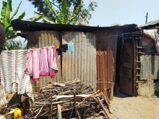OpenHAP, Kenya
| Objective / Description | |
EED Advisory with its partners locally developed the “OpenHAP” - a low-cost IoT-enabled household air pollution (HAP) monitoring system. In a pre-study the performance of different low-cost air pollution sensors was tested. In the main study, 20 OpenHAP monitoring systems were built using the best performing sensor from the pre-study and subsequently, household air pollution (HAP) concentration was measured in 100 households in two low-income areas in Nairobi Kenya. The results of the measurements show that cooking with a firewood cookstove leads to 4-5 times higher HAP concentrations than cooking with a kerosene or LPG cookstove. Also, other factors influencing the HAP concentrations were examined. For example, the air exchange rate in a single-room household is considerably lower than in a multi-room household, indicating that people living in single-room households are more exposed to high HAP levels. The results generated in this study can help to initiate appropriate policy actions at government level. Further information on the study step-up, outcome and lessons learned are documented in the final report. | |
| Partners | | | EED Advisory (Nairobi), Berkeley Air Monitoring Group (Berkeley), INFRAS (Zurich) |
| Learnings | | Indoor air pollution, IoT, low-cost sensors | |
| Documentation | |
|


